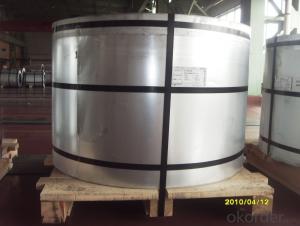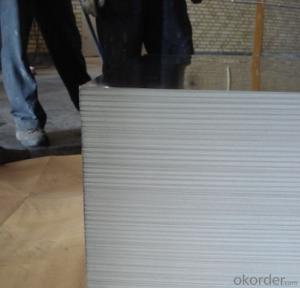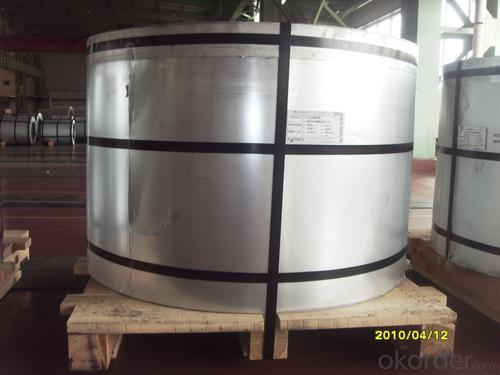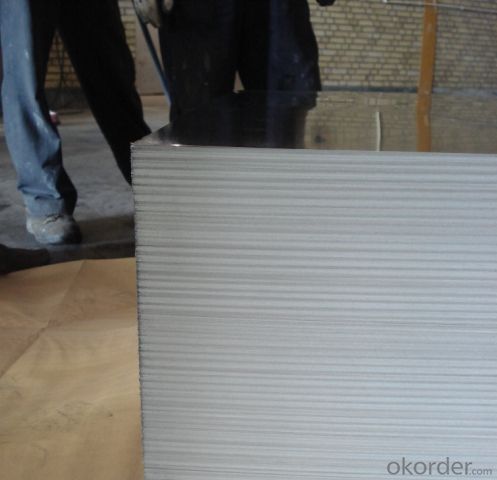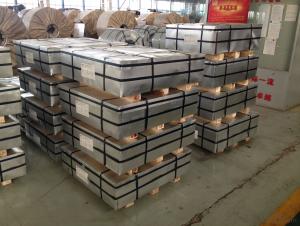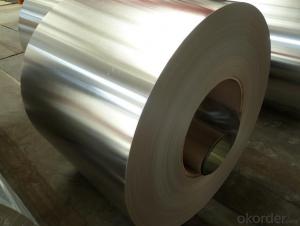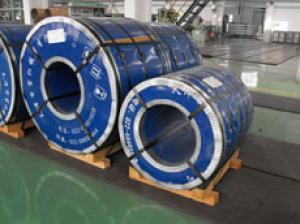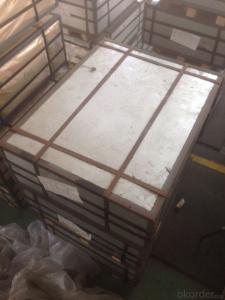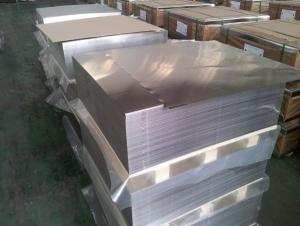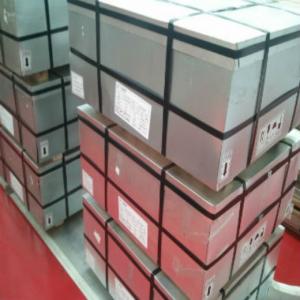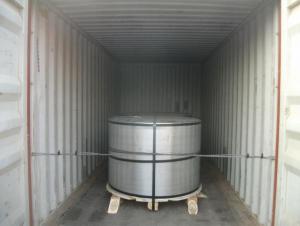Electrolytic Tinplate Sheets for 0.18 Thickness SPCC Sheets
- Loading Port:
- Shanghai
- Payment Terms:
- TT or LC
- Min Order Qty:
- 25 m.t.
- Supply Capability:
- 500 m.t./month
OKorder Service Pledge
OKorder Financial Service
You Might Also Like
1.Structure of Electrolytic Tinplate Sheets for 0.18Thickness SPCC Sheets Description
Electrolytic Tinplate Sheets is one of the metal packing materials, which is widely used for making painting cans ,chemical package cans , electrical cable ,battery and metal printing etc.
2. Main Features of Electrolytic Tinplate Sheets for 0.18Thickness SPCC Sheets
Steady and high quality
Fast shipment
Good experience for export work
For the surface, Plate uniform in thickness,uniform and smooth tin coating, without flaws,rusts,scratch,wave,nick of tin coating etc.
Price competitive
3.Electrolytic Tinplate Sheets for 0.18Thickness SPCC Sheets Images
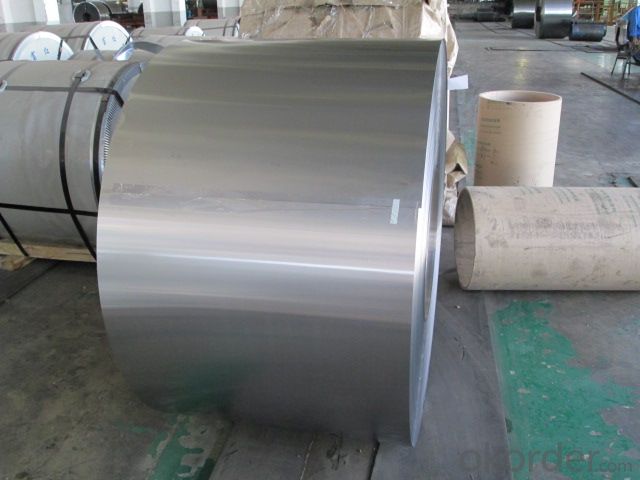
4. Electrolytic Tinplate Sheets for 0.18Thickness SPCC Sheets Specification
Standard : GB2520-2000 ,JIS G3303
Steel type : SPCC
Coating : 2.8/2.8
Surface: Bright, Stone ,
Thickness:0.18
Width :600MM~1000MM
Temper : T1~T5
Package: tinplate wrapped completely with an inner cover of plastic or waterproof papers with vorners protected with metal angels.
5.FAQ of Electrolytic Tinplate Sheets for 0.18Thickness SPCC Sheets
A. What is the package of tinplate? (Referred as below)
For sheets, thin plastic film + rust-proof paper + metallic cover + metallic angles+ steel band strips + fumigated wooden pallet.
For coil, thin plastic film + rust proof paper + metallic cover + steel band strips + fumigated wooden pallet
B. The surface of tinplate could you supply?
Stone finish, Bright finish, Matte finish, Silver finish
C. What quantity is the minimum order of tinplate?
Usually, the minimum quantity is 25MT. For special case, consult with us.
D. Can it make to be BA or CA for annealing?
Yes, both can do with.
- Q: How does tinplate packaging contribute to product differentiation?
- Tinplate packaging contributes to product differentiation by providing a unique and distinctive look to the product. The shiny and attractive appearance of tinplate packaging sets it apart from other packaging materials, catching the attention of consumers and creating a memorable impression. Additionally, tinplate packaging can be customized with various designs, colors, and patterns, allowing brands to showcase their uniqueness and stand out in the market. Overall, tinplate packaging helps products to differentiate themselves from competitors and create a strong brand identity.
- Q: Can tinplate be used for roofing and construction?
- Yes, tinplate can be used for roofing and construction. Tinplate is a type of steel coated with a thin layer of tin, which provides corrosion resistance and durability. It is commonly used in roofing and construction applications due to its strength, aesthetic appeal, and ability to withstand harsh weather conditions.
- Q: How is tinplate affected by different types of sauces and condiments?
- Tinplate is generally resistant to corrosion and is not significantly affected by different types of sauces and condiments. However, acidic sauces like tomato-based or citrus-based ones may cause slight discoloration or tarnishing on the tinplate surface over time. To prevent any adverse effects, it is advisable to store sauces and condiments in glass or plastic containers.
- Q: Can tinplate be used for signage?
- Yes, tinplate can be used for signage. It is a durable and versatile material that can be easily shaped, painted, and printed on, making it suitable for creating various types of signs. Additionally, tinplate is corrosion-resistant, which ensures the longevity of the signage, even when exposed to outdoor elements.
- Q: What are the main factors affecting tinplate market growth?
- The main factors affecting tinplate market growth include the demand for packaged food and beverages, expanding industrial applications, economic growth and urbanization, government regulations and policies, technological advancements, and changes in consumer preferences and behavior.
- Q: What are the main differences between tinplate and tin-free steel?
- The main differences between tinplate and tin-free steel lie in their composition and properties. Tinplate is a thin steel sheet coated with a layer of tin, which provides excellent corrosion resistance and protects the steel from rusting. Tin-free steel, on the other hand, is a steel sheet that does not have a tin coating but is instead coated with a layer of other metals like chromium or chromium oxide. While tinplate offers superior protection against corrosion, tin-free steel is known for its enhanced strength and durability. Additionally, tinplate is often used for food and beverage packaging due to its non-reactive nature, while tin-free steel finds applications in automotive parts, cans, and other industrial uses.
- Q: What are the main challenges in tinplate canning process?
- Some of the main challenges in the tinplate canning process include ensuring the proper sterilization of cans to prevent contamination, maintaining consistent quality control to meet regulatory requirements, managing the speed and efficiency of the production line, and addressing issues related to can integrity such as dents or leaks. Additionally, the cost of tinplate material and the environmental impact of its production and disposal are also significant challenges that need to be addressed.
- Q: What are the different types of tinplate welding techniques?
- There are primarily two types of tinplate welding techniques: spot welding and seam welding. Spot welding involves the use of electrical resistance to join two tinplate sheets at specific points, while seam welding is a continuous process that creates a continuous weld along the length of the tinplate sheets.
- Q: What are the advantages of using tinplate for stationery and office supplies?
- One advantage of using tinplate for stationery and office supplies is its durability. Tinplate is known for its strength and resistance to corrosion, making it a long-lasting material for items like pen holders, paper trays, or pencil cases. Additionally, tinplate is highly recyclable, making it an eco-friendly choice for sustainable office supplies. Its sleek and shiny appearance also adds a touch of elegance and professionalism to the products, making them visually appealing.
- Q: How does tinplate contribute to the safety of toys?
- Tinplate contributes to the safety of toys by providing a durable and non-toxic material that is resistant to corrosion and can withstand rough handling. It helps prevent sharp edges and ensures that toys do not break easily, reducing the risk of injuries during play. Additionally, tinplate is often used in the packaging of toys, offering a protective barrier that prevents contamination and prolongs the shelf life of the product.
Send your message to us
Electrolytic Tinplate Sheets for 0.18 Thickness SPCC Sheets
- Loading Port:
- Shanghai
- Payment Terms:
- TT or LC
- Min Order Qty:
- 25 m.t.
- Supply Capability:
- 500 m.t./month
OKorder Service Pledge
OKorder Financial Service
Similar products
Hot products
Hot Searches
Related keywords
